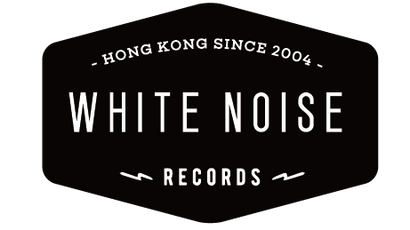From as objective a perspective as I can provide, I have to say that Other Music Recording Co's inaugural full-length release is quite a doozy. Late in 2011, we were collectively blown away by the solo debut of Shintaro Sakamoto, former frontman for Tokyo's Yura Yura Teikoku. That group was a powerhouse of contemporary psychedelic rock who gave over twenty years of service (going from a fiercely underground band at the U.F.O. Club, to chart-topping festival headliner and major label artist in Japan), and when they announced their dissolution in 2009, it was unsure where the trio's members would turn up next. When we first brought in import copies of Sakmoto's debut (self-released in Japan), it not only knocked my socks off, but also those of damn near every other employee at the shop regardless of their usual listening habits, to the point that one month's Staff Recommendations list posted on the wall had a header that read "Other Music's 'We Love Shintaro Sakamoto' Picks." Well, we loved it enough to decide to give the album a domestic release, and we're overjoyed to announce that it is finally available!
On How to Live with a Phantom, Sakamoto channels an era and sound from 1970s Japan that I'm a bit of a fanatic about often referred to as "city pop" -- it's a sophisticated, cosmopolitan blend that fuses loping, stoned grooves straight out of a Meters or Little Feat album with a hint of country soul glazed with a hearty helping of sun-soaked breeze that nods to everything from Van Dyke Parks and Buffalo Springfield to Ned Doheny and Steely Dan. The beauty here, though, is that he's taking American influences and re-contextualizing them in ways that Americans seldom pull off due to the lack of distance from the source; he's fusing these sounds because they simply sound great together, and he pulls it off with astonishing results seldom heard since Haruomi Hosono's pre-Yellow Magic Orchestra solo career (which many longtime Update readers will know is perhaps one of the highest compliments I can bestow to a musician... those Hosono records are sacred texts to me!). It's also worth noting that Sakamoto not only wrote all of the material, he's also performing nearly every note on the record himself, save for percussion, horns, and the chorus of female backup vocalists. He allegedly learned how to play a few of these instruments for the making of the album, and he nails it with the precision of a seasoned session player, knocking things down like a one-man wrecking crew.
As sunny and groovy as the album sounds in vibe, the song topics are a whole other ballgame, with Sakamoto's dark-hued lyrics (full English translation included in our edition) dealing with death and despair, but more so in learning how to reconcile those emotions and struggles. It is, quite simply, an astonishing, rock solid, and hugely impressive debut outing for Sakamoto as a solo artist, and one which proves his skills as a songwriter, arranger, and producer. You don't have to be a fan or even familiar with the sounds and history of Yura Yura Teikoku to get down with this album; it appeals to the stoned psych and folk set, the cosmo fashion heads, the worldbeat/international funk diggers, and many demographics in between. I feel proud that we are introducing our label with such an indestructible debut album, and if you've ever enjoyed a record taken on my recommendation in the past, I cannot stress enough that this album gets the highest possible recommendation I could bestow upon it... and that was the case before we'd even decided to release it ourselves! This is my ultimate summer jam of 2012, and it'll be nice to be able to put it on my Best of the Year list (again)! Enjoy.














